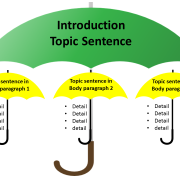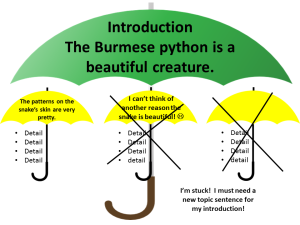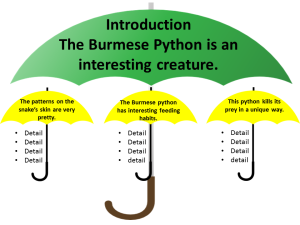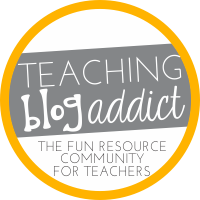| Because of Winn-Dixie by Kate DiCamillo is a middle school favorite! Your students will love the award winning book Because of Winn-Dixie. While this book is often used in elementary school, this is one of the middle school novel units that is perfect for struggling readers in the sixth, seventh, or even eighth grade. Print free lesson plans for Because of Winn-Dixie.
The Boy in the Striped Pajamas, an unforgettable tale of the Holocaust, is sure to hook your most reluctant readers. Print free lesson plans for one of our best middle school novel units, The Boy in the Striped Pajamas.
Bridge to Terabithia by Katherine Paterson tells a heartfelt story of friendship. Your middle school students will hang on to every page of this book! Print free lesson plans to teach this novel.
Bud, Not Buddy by Christopher Paul Curtis is an excellent middle school novel. With a backdrop of the Great Depression, Curtis weaves together a story of friendship, family, and acceptance. Print free lesson plans for Bud, Not Buddy.
The Cay by Theodore Taylor is a story of survival and friendship. Your students will not want to stop reading this awesome and powerful story! Print free handouts and lessons for The Cay.
The Devil’s Arithmetic by Jane Yolen is a powerful and touching story of the Holocaust. Check out our lesson plans and tests for this novel. Plus, recently we created an interactive notebook edition of this novel unit. If you use interactive notebooks in your class, check out this post to download a free interactive activity!
Double Dutch by Sharon Draper is sure to be a hit with your middle schoolers. Check out our free lesson plans for this novel.
Freckle Juice by Judy Blume is a fast and easy read. It’s another one of those great middle school novel units for struggling readers in middle school. These lesson plans would also be suitable for elementary school students. Print free lesson plans for Freckle Juice.
The Great Gilly Hopkins is sure to be a hit with your middle school students! Gilly proves to be a realistic, hilarious, and somewhat wayward character who really just needs to be loved. Print free lesson plans for The great Gilly Hopkins!
Flush by Carl Hiaasen is just as good if not better than Hoot. Carl Hiaasen’s second novel for young readers is filled with his usual quirky characters, and it centers around environmental themes, and life lessons. Noah’s dad is furious that raw sewage is being carelessly dumped from the Coral Queen casino boat. In fact, he is so upset that he sinks it and ends up in jail. Noah is determined to right the wrongs of his father while all the while seeking to find justice himself. Click here to view free lesson plans to teach this novel and a test for the first seven chapters.
Hatchet by Gary Paulsen has become a middle school favorite! Print free lesson plans to teach this novel.
Holes is a must-read for middle school students! Print free lessons and activities for the novel Holes.
Hoot by Carl Hiaasen is sure to be a hit with your middle schoolers. In his first novel for a younger audience, Carl Hiaasen brings readers right into the middle of a mystery, involving endangered miniature owls, a goofy police officer, the Mother Paula’s All-American Pancake House, and three middle school kids who are determined to do whatever it takes to fight for what is right.Of all of our middle school novel units, this one has the greatest reviews, and it is an unforgettable book! Click here to view freelesson plans to teach this novel and a test for the first seven chapters.
Island of the Blue Dolphins is full of suspense and action. Print free standards-based activity sheets and a portion of a test for this novel.
Joey Pigza Swallowed the Key by Jack Gantos is a lighthearted novel suitable for middle school kids. Your students will laugh at Joey’s antics yet sympathize with his needs. Print free lesson plans for Joey Pigza Swallowed the Key.
Love, Stargirl by Jerry Spinelli is the touching sequel to Stargirl. In this novel, Stargirl writes letters to Leo as she tries to come to terms with their complicated relationship. Print free lesson plans for Love, Stargirl.
The Man Who Loved Clowns by June Rae Wood is a number one favorite among middle schoolers. They will laugh like never before, and they may even shed a tear or two! This moving novel tells of the hopes, struggles, and fears of a teenage girl and her special relationship with her uncle who has Down -Syndrome. Your middle school students will love this book, and they will never forget it! Click here to view free lesson plans for the novel.
Maniac Magee is a page-turner your students will not forget! View free lesson plans for Maniac Magee by Jerry Spinelli
Number the Stars, a book about the Holocaust, by Lois Lowry is a Newberry Medal award winning novel. This compelling story will hook your reluctant readers and pull them into and unforgettable story of friendship, courage, and hardships. Print free lesson plans for Number the Stars.
On My Honor by Marion Dane Bauer tells a powerful story that your students will never forget. This book is short and a suspenseful page turner. It’s perfect for reluctant readers! Print free handouts for On My Honor.
Rules by Cynthia Lord will keep your middle school students interested as they read about twelve-year-old Catherine and her autistic brother David. Catherine just wants a normal life, but there is more than her younger brother that complicates that. Print free lesson plans for Rules.
The Outsiders by S.E. Hinton is always a favorite among middle schoolers. This classic is timeless and will never be forgotten. Print free handouts for The Outsiders.
Sarah, Plain and Tall by Patricia MacLachlan is a heartfelt, touching story that will captivate your students. This is a short and easy read for reluctant or struggling middle school readers. Print free lesson plans for Sarah, Plain and Tall.
Small Steps, Louis Sachar’s newest book stars Armpit, one of the guys from Camp Green Lake. Armpit is now in his late teens and while trying to make something of his life, finds himself in some tough situations. This humorous and touching book gives a real world outlook and teaches a notable life lesson – The secret to life is to take small steps and just keep moving forward. Your students will love this fun loving, adventurous novel! Print free lessons to accompany Small Steps.
Stargirl by Jerry Spinelli is also an awesome novel for middle schoolers! Your students will fall in love with Stargirl and laugh as she tries to fit in with the students at her new high school! As soon as they finish reading Stargirl, they will rush to read the sequel, Love, Stargirl! Print free lesson plans for Stargirl!
Tales of a Fourth Grade Nothing by Judy Blume is suitable for students in the third through sixth grade. Your students will automatically fall in love with the character Fudge and laugh through every page! Print free handouts for tales of a fourth grade nothing.
Tuck Everlasting is a touching novel your students will not forget! They will love to read about Winnie as she becomes friends with the friendly yet unusual Tuck family. Click here to get our free lesson plans for Tuck Everlasting.
The Tale of Despereaux is a magical story that your students will remember forever. Print free lessons for The Tale of Despereaux.
The Watsons Go to Birmingham is sure to be a hit in your classroom! Print free lessons for this novel today!
Check back often! Our list will grow! Happy teaching! |









